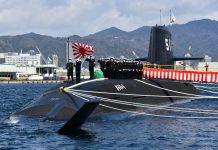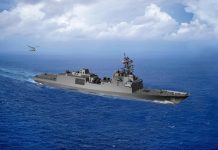So far, the US is the only country to develop, operate and sell its fifth-generation fighter jets, while China and Russia have clearly lagged behind. The race is now on to develop the world’s first sixth-generation fighter jet.
Clear Message To China: India Army Will Fire If PLA Soldiers Come Forward
Under the Next Generation Air Dominance (NGAD) program, the US Air Force has successfully flown the first prototype of the sixth-generation fighter.
“We’ve already built and flown a full-scale flight demonstrator in the real world, and we broke records in doing it,” Will Roper, the Assistant Secretary of the Air Force for Acquisition, Technology and Logistics, told Defense News in an interview. “We are ready to go and build the next-generation aircraft in a way that has never happened before.”
On the other hand, China’s sixth-generation fighter will come into being by 2035 or earlier, said Wang Haifeng, a chief architect at Chengdu Aircraft Research and Design Institute that designed the J-20 fighters, in a Global Times (GT) report.
Although there aren’t a lot of details available about the capabilities and features of the fighter but Wang stated that it could have the application of artificial intelligence, extreme stealth and omnidirectional detection. He added that the fighter may have laser weapons, self-adapting engines and hypersonic weapons.
Hong Kong-based military commentator Song Zhongping said in an SCMP report that it is too early to compare the fighters from each country. He added that the American fifth-generation fighters were completed a decade ago, thus it isn’t surprising that they have progressed onto the sixth-generation fighters now.

The US Air Force has Lockheed Martin F-22s and F-35s, both fifth-generation fighters, entered service in 2005 and 2015 respectively. Both the jets have advanced avionics, stealth capabilities and super manoeuvrability. Meanwhile, China’s fifth-generation fighter, Chengdu-J-20, took its first flight in 2011 and entered service only three years ago in 2017.
Apart from the US and China, Russia and the UK have also been working on developing their sixth-generation fighters. Several local media reports quoted Industrial Director of Rostec Aviation Complex, Anatoly Serdyukov, saying that the Russian giants, Mikoyan (MiG) and JSC Sukhoi could come together to work on their next-generation fighter.
The UK also announced its ambitious ‘Tempest program’ in 2018 to develop sixth-generation fighters that will replace its fleet of Eurofighter Typhoons is expected to be a fighter complementing the F-35.
With BAE System leading the program along with the Royal Air Force, Rolls Royce will contribute engines while European firm MBDA will integrate weapons and Italian company Leonardo will develop sensors and avionics. It is expected to take its first flight in 2035.
A paper published by GT, authored by Yang Wei, the chief designer of the Chinese J-20 stealth fighter, the next-generation fighter jet is being planned to trump all of the features that are currently possessed by a fifth-generation fighter.
“Amid great power competition and the commissioning of more and more fourth-generation fighter jets (or fifth generation under US classification, which includes China’s J-20, US’ F-22 and F-35), there have been extensive discussions on the changes in types of warfare, and the development of post-fourth generation fighter jets,” he wrote in the paper.
Although the US is leading the race, it is yet to see which country trumps to develop and operationalize the world’s first sixth-generation fighter jet.




